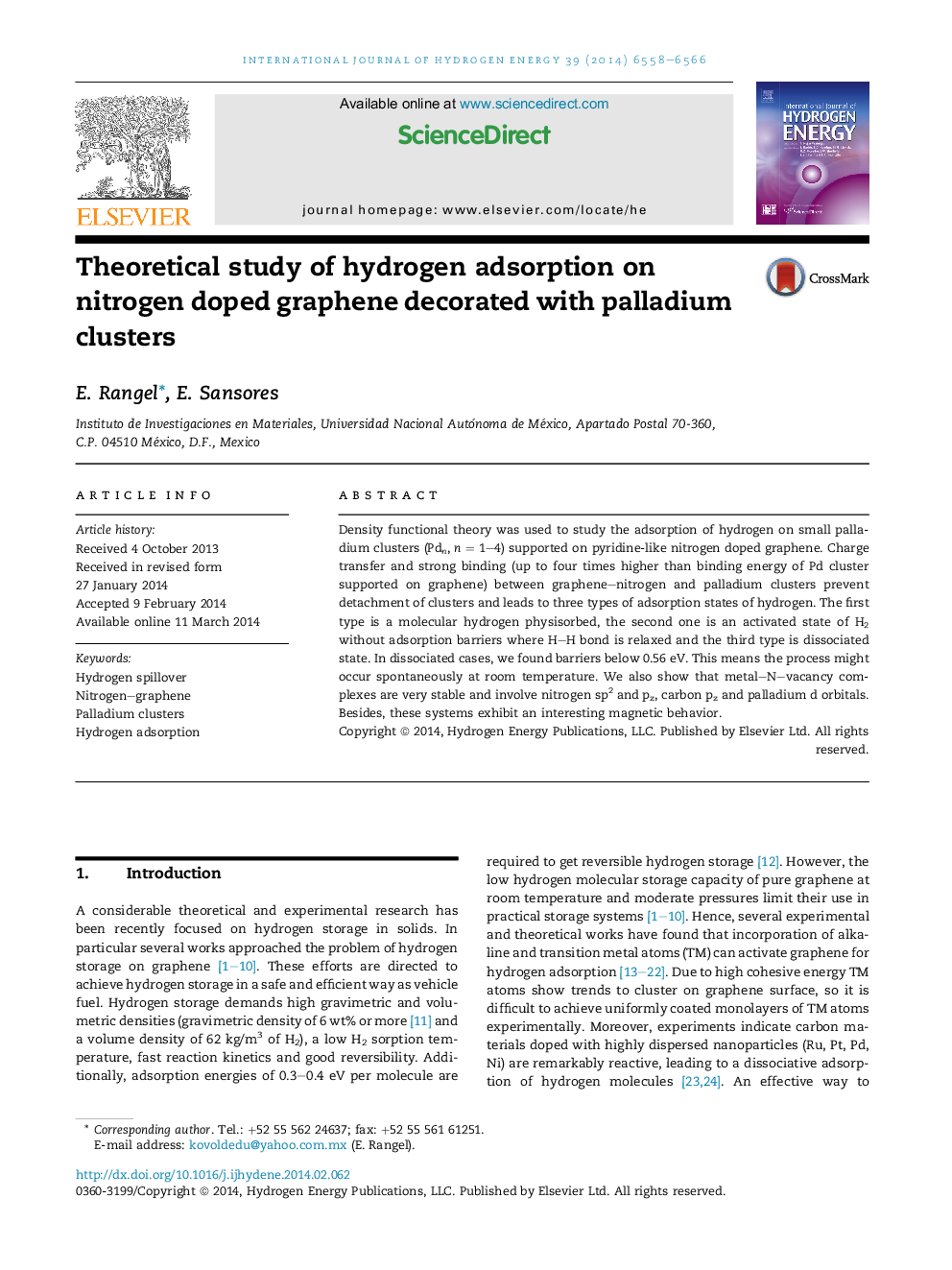| Article ID | Journal | Published Year | Pages | File Type |
|---|---|---|---|---|
| 1272848 | International Journal of Hydrogen Energy | 2014 | 9 Pages |
•Pd4 clusters supported on pyridinic N-graphene form three-dimensional structures.•Pyridinic vacancies act as nucleation sites and prevents detachment of Pd clusters.•Hydrogen may be physisorbed, activated or in dissociated states.•In dissociated state the barriers are below 0.56 eV.•The dissociation might occur around 300 k as required for technological uses.
Density functional theory was used to study the adsorption of hydrogen on small palladium clusters (Pdn, n = 1–4) supported on pyridine-like nitrogen doped graphene. Charge transfer and strong binding (up to four times higher than binding energy of Pd cluster supported on graphene) between graphene–nitrogen and palladium clusters prevent detachment of clusters and leads to three types of adsorption states of hydrogen. The first type is a molecular hydrogen physisorbed, the second one is an activated state of H2 without adsorption barriers where H–H bond is relaxed and the third type is dissociated state. In dissociated cases, we found barriers below 0.56 eV. This means the process might occur spontaneously at room temperature. We also show that metal–N–vacancy complexes are very stable and involve nitrogen sp2 and pz, carbon pz and palladium d orbitals. Besides, these systems exhibit an interesting magnetic behavior.
Graphical abstractFigure optionsDownload full-size imageDownload as PowerPoint slide
